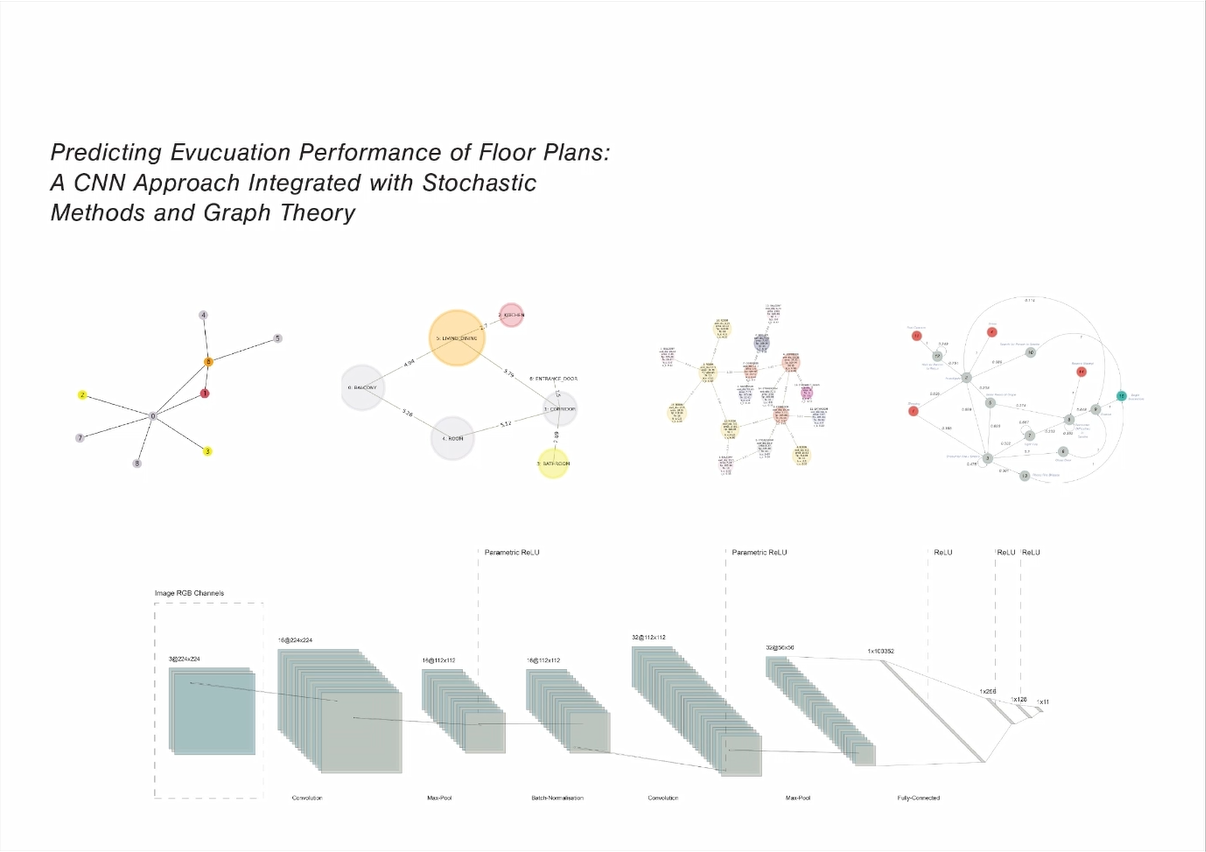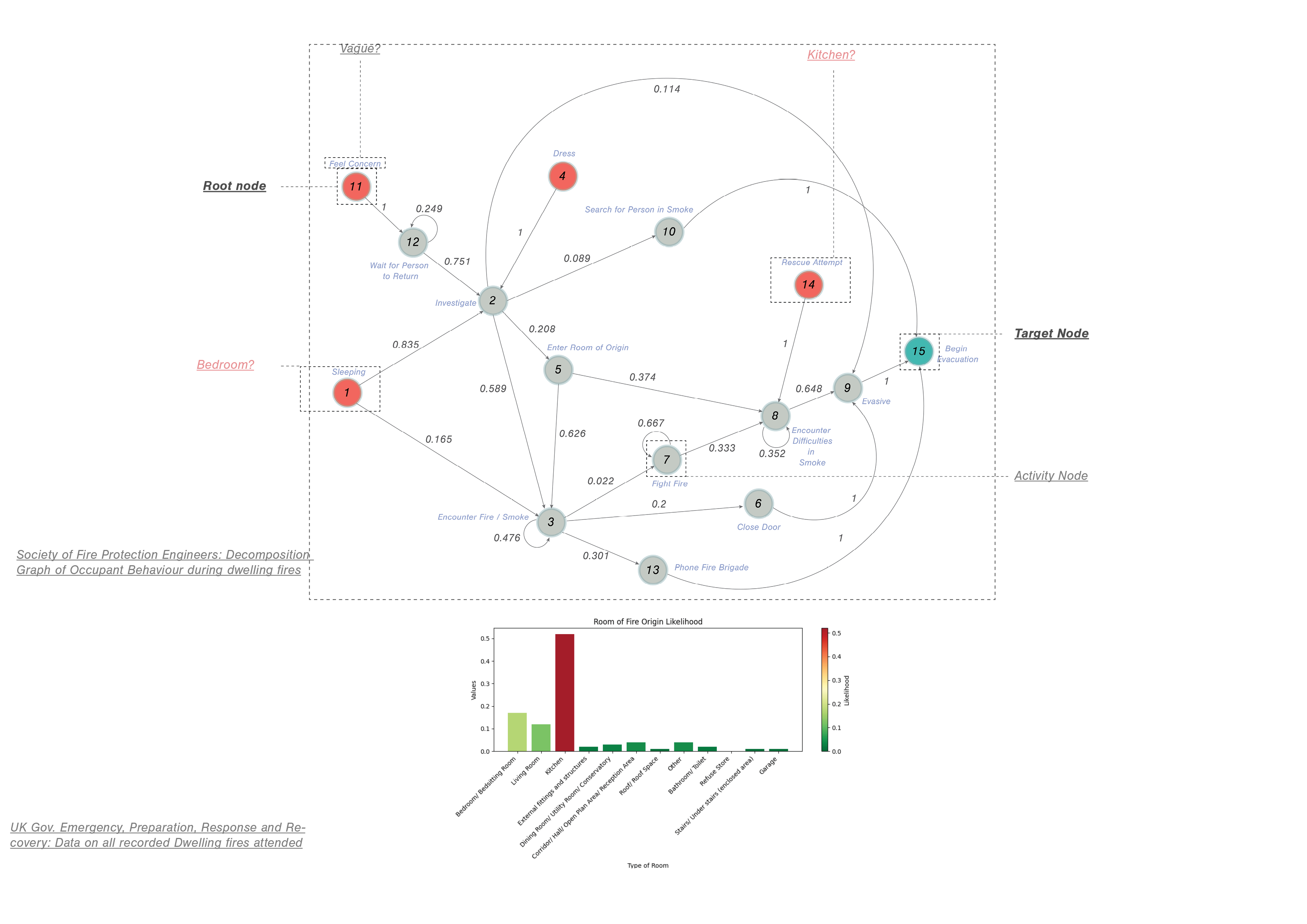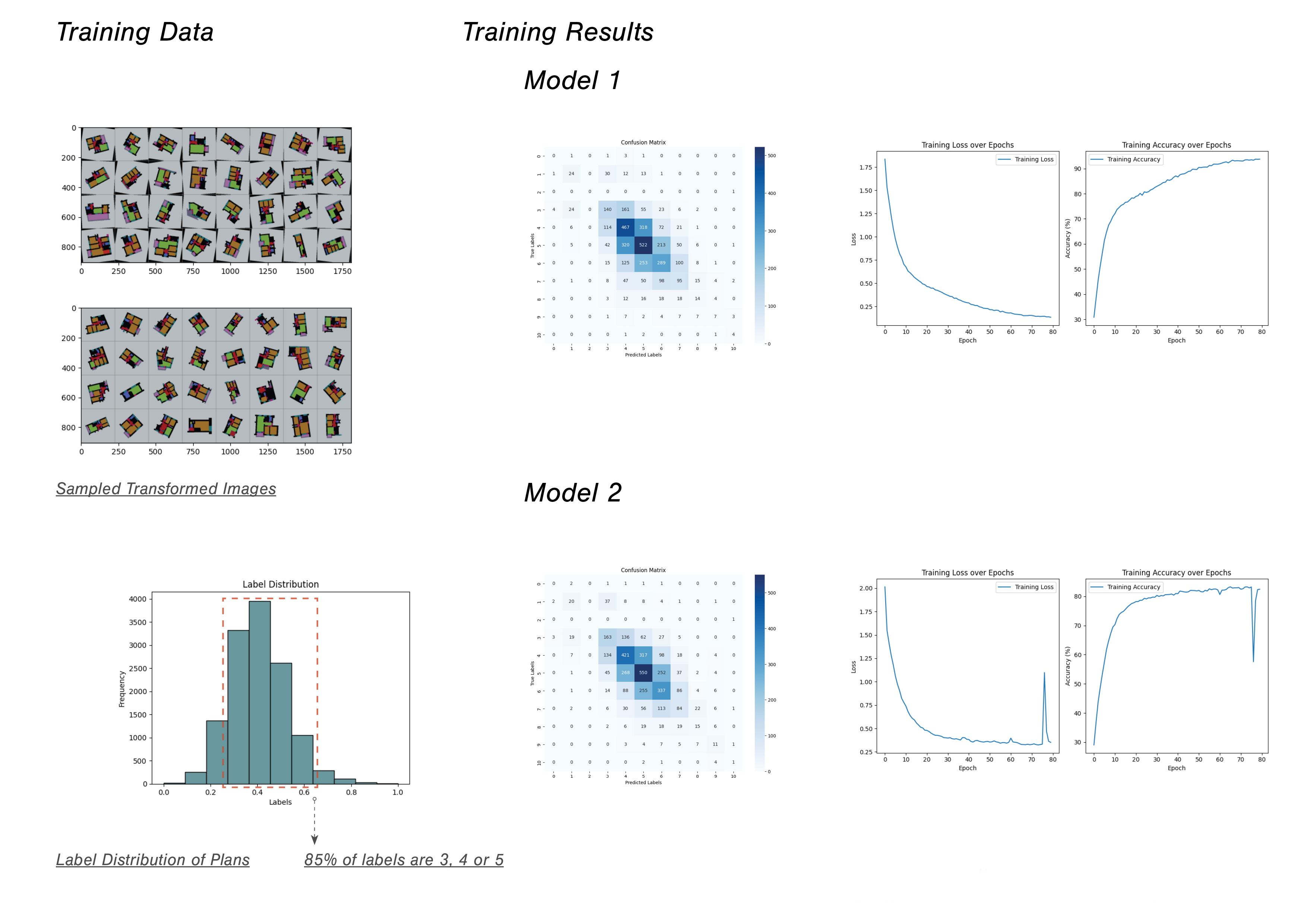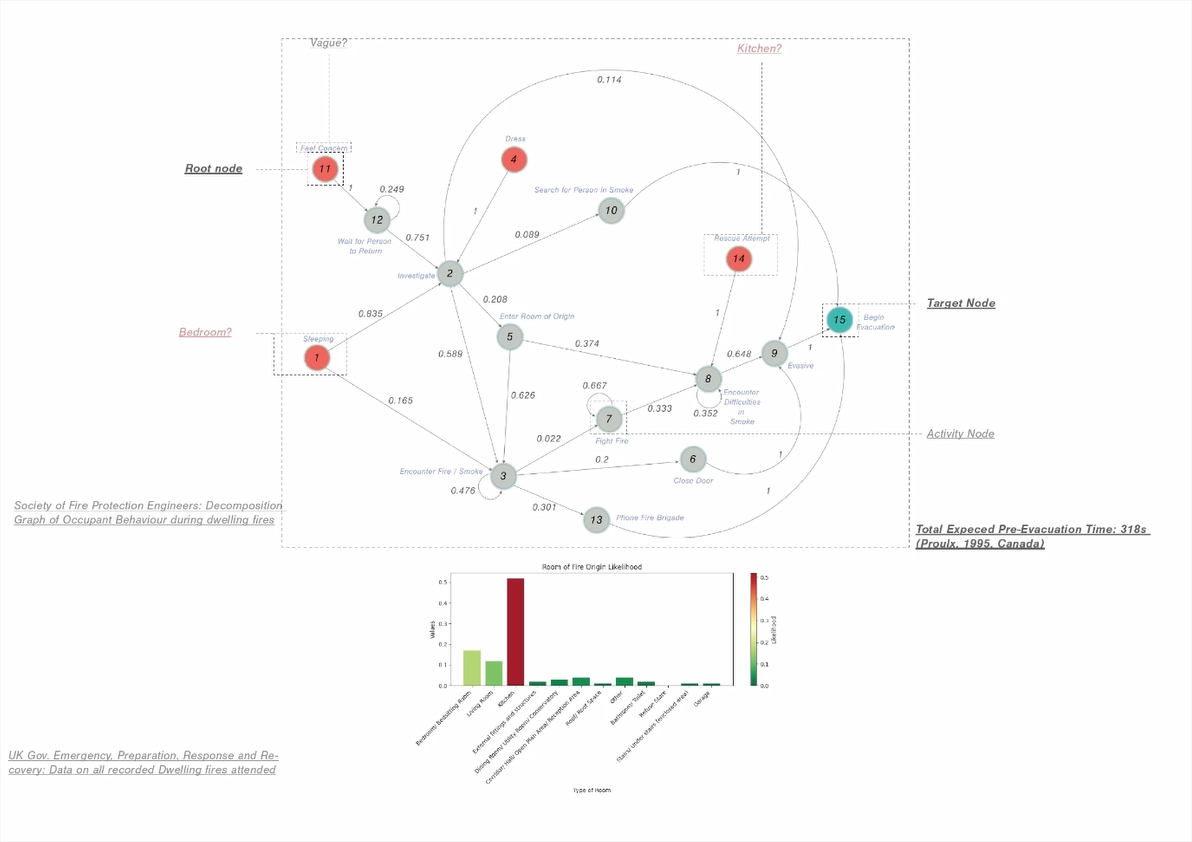Project: Predicting Evacuation Performance of Floor Plans – Mavrotas
-
Intro
-
Technical Aspects
Information
| Primary software used | Python |
| Software version | 1.0 |
| Course | Computational Intelligence for Integrated Design |
| Primary subject | AI & ML |
| Secondary subject | Machine Learning |
| Level | Intermediate |
| Last updated | November 27, 2024 |
| Keywords |
Responsible
| Teacher | |
| Faculty |
Project: Predicting Evacuation Performance of Floor Plans – Mavrotas 0/1
Project: Predicting Evacuation Performance of Floor Plans – Mavrotas
Predicting Evacuation Performance of Floor Plans: A CNN Approach Integrated with Stochastic Methods and Graph Theory
In assessing the fire safety of a building, two sources of damage are identified: damage to the building itself, such as the burning or ignition of materials, and harm to the occupants, including injury or loss of life. Material behaviour under fire has been investigated more thoroughly than occupant behaviour, specifically: occupant behaviour under an evacuation emergency. This work proposes an attempt at predicting the evacuation time, given an architectural floor plan. Total evacuation time is considered as the sum of pre-evacuation, and evacuation time intervals. Pre-evacuation time is taken as the moments before occupants become alert of the fire, or the actions occupants take before attempting to evacuate, such as attempting to rescue others. Evacuation time is then taken as the expected time for an occupant to exit the apartment. There is little data available on pre-evacuation times during a fire emergency; this work considers a chart of some possible actions during the pre-evacuation time of a dwelling fire emergency, from the International Handbook of Fire Safety Engineering (IHFSE). Stochastic methods are then used to make a prediction based on spatial attributes of the floor plan. Evacuation time is predicted using the length of the shortest path to the exit from each room of the apartment, and an assumed occupant speed. The Swiss Dwelling dataset is used to assign labels to floor plan images; the labels are the sum of pre-evacuation and evacuation times. A CNN is trained on the floor plan images and further validated. The findings show certain accurate predictions, however floor plans lying outside of the mean are not predicted accurately. More research needs to be conducted to assess occupant behaviour during emergency evacuation.

Project Information
- Title: Predicting Evacuation Performance of Floor Plans: A CNN Approach Integrated with Stochastic Methods and Graph Theory
- Author(s): Antonios Mavrotas
- Year: 2024
- Type: Course Project, Building Technology, Computational Intelligence for Integrated Design
- ML tags: Floor Plan, Graph Theory, Markov Chain, Monte Carlo Method, CNN, Genetic Algorithm, Fire Emergency Evacuation, Pre-Evacuation time, Occupant Behaviour, Fire Safety
- Topic tags: Emergency Evacuation Prediction
- Link: Github Repository Fire Evac Floor Plan
Project: Predicting Evacuation Performance of Floor Plans – Mavrotas 1/1
Technical Aspectslink copied
Software & plug-ins used:
- Python 3.11
- Jupyter Notebook
- Networkx (Floor Plan Graph Analysis)
- Shapely (Construction of Floor Plan Graph from Room Shapes)
- Pytorch (CNN model)
- PyGAD (Genetic Algotithm for MCMC)
- Itertools, Numpy, Pickle, GeoPandas (composition of dataset of floor plan graphs)
Design workflow
The proposed workflow is intended to be used by a designer or architect to make very early assessments of a sketch floor plan. Since the model uses RGB images as input, the intention is that, given a user interface, the designer can input an image of a sketch floor plan and get a rough prediction on how reasonable the design is in terms of its performance under emergency evacuation.
ML-workflow
This work begins by assigning each floor plan image in the Swiss Dwelling dataset a label, which is later used to train a CNN on predicting the fire evacuation risk.

Pre-evacuation time is predicted using Monte Carlo simulations on a Markov Chain (MCMC), with a Markov Chain representing occupant actions. Nodes of the Markov chain are taken as occupant actions from the IHFSE, the likelihood (0 to 1) of progressing from one action to another is predicted using the Genetic Algorithm on the MCMC, given the total expected pre evacuation time of a path in the Markov Chain.

Evacuation time is taken as the mean of the predicted evacuation times from each room to the exit. This is further weighted with the betweenness-centrality and closeness-centrality metrics of the kitchen: a well-connected kitchen is seen as a risk, since about 50% of dwelling fires start in the kitchen.

Pre-evacuation and evacuation time are combined and normalised into labels (11 labels, 0 to 1). Features are taken as the normalised tensors of the transformed RGB 224×224 images (3x224x224). Two simple CNN architectures are constructed and compared. The main differences includes the use of a batch-normalisation layer and the addition of a fully connected layer.

Results show good performance for floor plans with labels between 4 and 6, and poor performance for floor plans with labels 1-3 or 7-11. This shows that the method of labelling is not accurate as the scope of each label is very narrow, appropriate for a very detailed fire safety evaluation. However, the work is highly predictive, uncertain and stochastic, thus less labels should be used.

Write your feedback.
Write your feedback on "Project: Predicting Evacuation Performance of Floor Plans – Mavrotas"".
If you're providing a specific feedback to a part of the chapter, mention which part (text, image, or video) that you have specific feedback for."Thank your for your feedback.
Your feedback has been submitted successfully and is now awaiting review. We appreciate your input and will ensure it aligns with our guidelines before it’s published.
